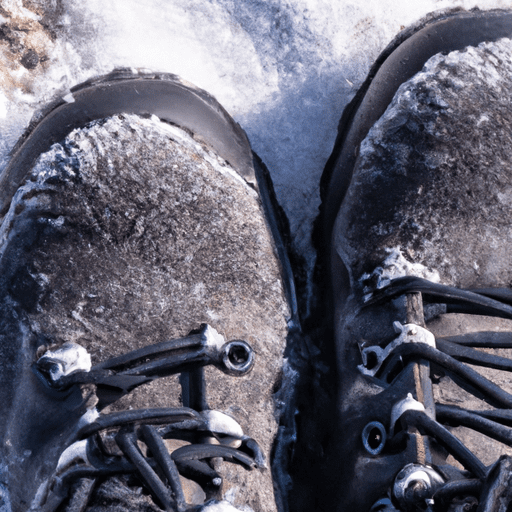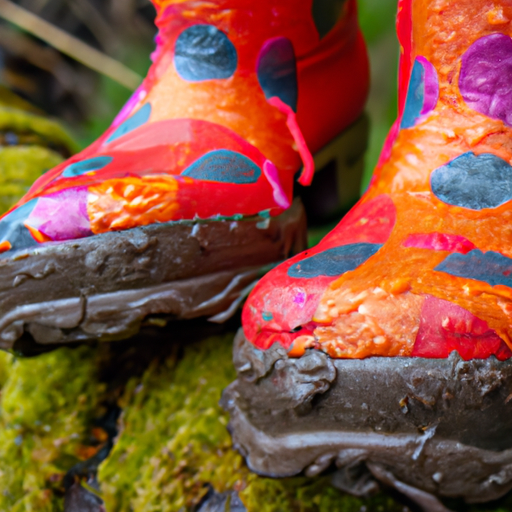Are you a nature enthusiast who loves to embark on adventurous hikes, even during the chilly winter months? If so, then staying warm on those cold-weather hikes is essential for an enjoyable and safe experience. In this article, we will provide you with 10 invaluable tips to ensure that you stay cozy and comfortable during your outdoor escapades. From layering your clothing to packing hand warmers, these tips will have you well-prepared to conquer any icy trail that comes your way. So grab a hot drink, sit back, and prepare to discover the secrets of staying warm on cold-weather hikes.
Choose the Right Clothing
Layer Up with Base Layers
When it comes to dressing for cold-weather hikes, layering is key. Start with a base layer, which is the layer closest to your skin. Base layers are designed to wick moisture away from your body and keep you dry. Look for a base layer made of synthetic materials or merino wool, which both offer excellent moisture-wicking properties. A long-sleeve shirt and leggings or thermal underwear make for a great base layer combination.
Insulate with a Mid-layer
The next layer you'll need is a mid-layer, which provides insulation and warmth. Fleece jackets and sweaters are great options for mid-layers, as they are lightweight, breathable, and provide excellent insulation. Choose a mid-layer that fits comfortably over your base layer and allows for a full range of motion. Depending on the temperature, you may also want to consider adding another mid-layer for extra warmth.
Protect with an Outer Layer
The outer layer is your first line of defense against wind, rain, and snow. Look for a waterproof and windproof jacket that also offers breathability. This will keep you dry and protected from the elements, while still allowing moisture to escape from your body. A good outer layer should have adjustable cuffs, a high collar, and a hood to provide extra protection. It's also a good idea to choose a jacket with pockets, so you can easily access any essentials you need while on the trail.
Wear Warm Accessories
Don't forget to accessorize! Warm accessories such as hats, beanies, scarves, and neck gaiters are essential for keeping your head and neck warm. Opt for materials like wool or fleece that trap heat and provide insulation. Additionally, wearing thermal socks and insulated boots is crucial for keeping your feet warm and dry. Gaiters are also a great accessory to have, as they help keep cold air and moisture out of your boots.
Pay Attention to Your Feet
Invest in Insulated Boots
When it comes to choosing footwear for cold-weather hikes, investing in a pair of insulated boots is a must. Insulated boots are specifically designed to keep your feet warm and protected in low temperatures. Look for boots with insulation made of materials like Thinsulate or Primaloft, as these provide excellent heat retention. Additionally, make sure the boots have a waterproof exterior to keep your feet dry in snowy or wet conditions.
Wear Warm Socks
The right socks can make all the difference when it comes to keeping your feet warm on cold-weather hikes. Choose socks made of thermal or merino wool, as these materials provide excellent insulation and moisture-wicking properties. Avoid cotton socks, as they tend to retain moisture and can make your feet feel cold and clammy. Layering your socks, with a thin liner sock underneath a thicker wool sock, can also help provide extra warmth and cushioning.
Use Gaiters to Keep Cold and Moisture Out
Gaiters are protective coverings that go over your boots and pants to keep snow, water, and debris out. They are especially useful in cold weather, as they help keep your feet dry and warm. Gaiters act as a barrier against snow entering your boots and provide an extra layer of insulation. Look for gaiters made of waterproof and breathable materials that are easy to put on and take off. They should also have a secure fit, so they stay in place during your hike.
Protect Your Hands
Wear Insulated Gloves or Mittens
Keeping your hands warm is crucial in cold weather, as the extremities are more susceptible to frostbite. Invest in a pair of insulated gloves or mittens that provide excellent insulation and wind protection. Look for gloves or mittens made of materials like Thinsulate or Primaloft, as these offer superior warmth without adding bulk. Make sure the gloves or mittens have a snug fit and are flexible enough to allow for easy movement of your hands.
Consider Using Hand Warmers
If you tend to have cold hands even with insulated gloves or mittens, consider using hand warmers. Hand warmers are small packets that generate heat and can be easily tucked into your gloves or mittens. They provide additional warmth and can make a big difference in keeping your hands cozy on cold-weather hikes. Disposable hand warmers are readily available and can provide several hours of heat. Alternatively, reusable hand warmers that can be heated up again after use are also a good option.
Cover Your Head and Neck
Wear a Hat or Beanie
A significant amount of body heat is lost through the head, so it's essential to keep your head covered in cold weather. Wearing a warm hat or beanie is a simple and effective way to retain heat and keep your head warm. Look for hats made of insulating materials like fleece or wool that cover your ears as well. Beanies with a snug fit are ideal, as they provide maximum insulation and help prevent heat loss.
Use a Neck Gaiter or Scarf
In addition to wearing a hat or beanie, protecting your neck is also important for staying warm. A neck gaiter or scarf can help trap heat and prevent cold air from entering your jacket. Choose a neck gaiter or scarf made of thick material that can be wrapped around your neck snugly. Fleece or wool options are excellent choices, as they provide superior insulation and can be easily adjusted for comfort.
Don't Forget Your Legs
Layer Up with Thermal Leggings
Just like with your upper body, layering is important for your lower body as well. Start with a base layer of thermal leggings, which provide insulation and help wick moisture away from your skin. Look for leggings made of synthetic materials or merino wool, as these offer excellent warmth and breathability. A snug fit is ideal, as it helps retain heat and prevents bulkiness.
Wear Insulated Pants or Bibs
To add an extra layer of insulation, wear insulated pants or bibs over your thermal leggings. Insulated pants are designed to trap heat and provide protection against cold winds, while still allowing for ease of movement. Look for pants or bibs made of waterproof and windproof materials, and consider options with reinforced knees and seat for added durability. Additionally, adjustable waistbands and cuffs allow for a customized and comfortable fit.
Choose the Right Backpack
Opt for a Backpack with a Frame
When it comes to choosing a backpack for cold-weather hikes, opt for one with an internal or external frame. A frame helps distribute the weight of your pack and provides stability and support, especially when carrying heavier loads. Look for a backpack with a sturdy and lightweight frame that fits your body well. Adjustable shoulder straps and hip belts are also crucial for an ideal fit and proper weight distribution.
Choose a Backpack with Adequate Padding
In addition to a frame, choose a backpack with adequate padding in the shoulder straps and back panel. This padding helps distribute the weight of your pack and provides extra comfort, especially during long hikes. Look for backpacks with breathable materials and mesh panels that help wick moisture away from your body. Additionally, consider backpacks with multiple compartments and pockets for better organization and easy access to your gear.
Stay Hydrated
Drink Plenty of Water
Staying hydrated is just as important in cold weather as it is in warm weather. Cold temperatures can trick your body into thinking it's not thirsty, leading to dehydration. Make sure to drink plenty of water throughout your hike, even if you don't feel thirsty. A good rule of thumb is to aim for at least half a liter of water per hour of hiking. Use an insulated water bottle or bladder to prevent your water from freezing, and take sips regularly to stay hydrated.
Avoid Drinking Cold Liquids
While staying hydrated is important, avoid drinking cold liquids during your hike. Cold beverages can lower your body temperature and make it more challenging to stay warm. Opt for lukewarm or room temperature water instead, or consider drinking warm beverages like tea or hot chocolate. If you do want to bring cold drinks, store them in an insulated container to help maintain their temperature.
Eat Properly
Consume High-Energy Foods
When hiking in cold weather, your body needs more energy to stay warm and maintain optimal performance. Consume high-energy foods that are rich in carbohydrates and healthy fats, as these provide long-lasting fuel for your body. Snacks like nuts, trail mix, energy bars, and dried fruits are all excellent options. Additionally, pack foods that are easy to eat and don't require much preparation, as cold weather can make it challenging to cook or handle food.
Pack Warm Snacks
In addition to high-energy foods, pack warm snacks that can help provide a quick boost of warmth and comfort. Foods like hot soup or broth in a thermos, warm sandwiches, or hot drinks can all help warm you up from the inside out. These snacks can be a treat during your hike and provide an extra layer of warmth during breaks. Just make sure to choose foods that are safe to eat at room temperature or can be easily heated up.
Take Regular Breaks
Find Sheltered Spots to Rest
Taking regular breaks during your cold-weather hike is essential for maintaining your energy levels and preventing exhaustion. Look for sheltered spots, such as trees or rock formations, where you can rest without being exposed to cold winds or precipitation. Use these breaks to refuel with snacks and water, adjust your clothing layers if needed, and take a moment to appreciate the beauty of your surroundings. It's important not to rush and to listen to your body's needs.
Keep Moving to Generate Heat
While taking breaks is important, it's equally important to keep moving to generate heat and maintain your body's warmth. Keeping an active pace helps increase your blood circulation and raises your body temperature. If you start feeling cold, increase your pace or do some simple exercises like jumping jacks or lunges to get your blood flowing. Remember to listen to your body and find a balance between movement and rest.
Be Prepared for Emergencies
Carry a Handheld Heat Source
In case of emergencies or unexpected circumstances, it's important to be prepared with a handheld heat source. Portable warmers, such as hand warmers or emergency blankets, can provide instant heat and help prevent hypothermia. Hand warmers can be placed in your pockets or gloves to keep your hands warm, while emergency blankets can be used to wrap around your body and retain heat. Always carry these items in your backpack, even if you don't anticipate needing them.
Pack an Emergency Blanket
An emergency blanket is a lightweight and compact item that can be a lifesaver in extreme cold conditions. These blankets are designed to reflect and retain body heat, providing an extra layer of insulation and protection against the cold. They take up very little space in your backpack but can make a significant difference in an emergency situation. Make sure to pack an emergency blanket and know how to use it effectively if the need arises.
Remember, staying warm on cold-weather hikes is essential for your comfort, safety, and enjoyment. By choosing the right clothing, paying attention to your feet, protecting your hands and head, and taking necessary precautions, you can have a memorable and cozy hiking experience even in the coldest of temperatures. Stay prepared, stay warm, and embrace the winter wonderland that awaits you on your cold-weather hikes!






